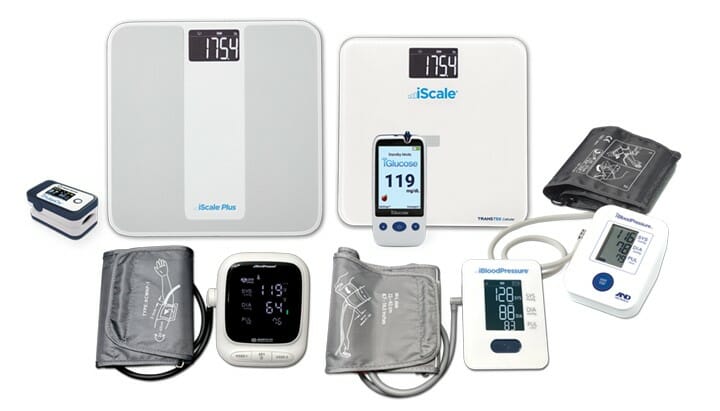In today's advancing healthcare landscape, innovation continues to reshape how we approach complex conditions like Chronic Kidney Disease (CKD). Traditionally, CKD care has often relied on intermittent clinic visits and periodic tests, leaving gaps in monitoring and potentially missing crucial patient health changes. RPM devices can help streamline and improve CKD care by providing real-time, continuous lifeline data.
What Is Chronic Kidney Disease?
Chronic Kidney Disease (CKD) is a long-term medical condition characterized by a gradual and progressive decline in kidney function. The kidneys play a crucial role in filtering waste products, excess fluids, and electrolytes from the blood to create urine, helping to maintain the body's internal balance. When the kidneys are damaged, or their function deteriorates, waste products and fluids can build up in the body, leading to various health complications.
How Is Chronic Kidney Disease Traditionally Treated?
Traditionally, care for kidney disease involves a combination of medical interventions, lifestyle modifications, and regular monitoring. Although the approach can vary depending on the stage of kidney disease and its underlying cause, it commonly includes:
• Medication Management:
Common medications include blood pressure medications (like ACE inhibitors or angiotensin receptor blockers), diuretics, phosphate binders, and erythropoiesis-stimulating agents to manage anemia.
• Dietary Changes:
Patients with kidney disease often need to adjust their diet to reduce the kidney workload and manage certain symptoms. This might involve limiting sodium, potassium, and phosphorus intake and adjusting protein intake based on the severity of kidney dysfunction.
• Fluid Management:
Kidney function affects the body's ability to regulate fluid levels. Patients may need to manage fluid intake to prevent fluid overload and edema (swelling).
• Blood Pressure Control:
Controlling blood pressure is crucial to slow the progression of kidney damage. Medications, lifestyle changes, and dietary adjustments can play a role in managing blood pressure.
• Monitoring and Laboratory Tests:
Regular monitoring through blood and urine tests is essential to track kidney function, electrolyte levels, and other indicators. These tests help healthcare providers assess the disease's progression and adjust treatment accordingly.
• Anemia Management:
Kidney disease often leads to decreased production of red blood cells, causing anemia. Anemia can be managed with medications (erythropoiesis-stimulating agents) and sometimes iron supplements.
• Bone Health:
Kidney disease can affect bone health because of mineral and vitamin metabolism disruptions. Treatment may involve vitamin D and calcium supplements to maintain bone strength.
• Dialysis:
Dialysis helps filter waste and excess fluid from the blood when the kidneys cannot do so effectively.
• Kidney Transplant:
This may be the most suitable option for individuals with end-stage kidney disease. Transplantation can significantly improve quality of life and overall health, though it comes with its own considerations and risks.
How Can Remote Patient Monitoring Devices Improve Chronic Kidney Care?
Cellular Remote Patient Monitoring (RPM) devices have the potential to significantly enhance the care and management of individuals with Chronic Kidney Disease (CKD) by providing real-time monitoring, personalized interventions, and improved communication. Some specific ways RPM devices can help improve chronic kidney care include:
• Early Detection of Changes:
RPM devices can monitor vital signs and key health parameters, such as blood pressure, heart rate, weight, and blood glucose levels. This allows for the early detection of any changes or trends that might indicate worsening kidney function or other complications. Early detection enables timely interventions, preventing the progression of CKD and reducing the risk of complications.
• Reduced Hospital Visits:
Regular in-person clinic visits can be time-consuming and burdensome for CKD patients. RPM devices can minimize the need for frequent hospital visits by enabling healthcare providers to monitor patients remotely. This convenience not only saves time for patients but also reduces healthcare costs associated with frequent check-ups.
• Pre-Dialysis Monitoring:
RPM devices can play a role in monitoring patients approaching the need for dialysis. By tracking relevant health parameters such as creatinine levels, glomerular filtration rate (GFR), blood pressure, and fluid status, RPM can help healthcare providers determine the optimal timing for initiating dialysis.
• Post-Dialysis Monitoring:
Patients need to be closely monitored after dialysis sessions to ensure that the treatment effectively removes waste products and excess fluids. RPM devices can help track vital signs, providing healthcare providers with real-time data to assess the outcomes of dialysis sessions and adjust treatment plans accordingly.
• Blood Pressure Control:
Hypertension is common in individuals with CKD and can be exacerbated by dialysis. RPM devices can monitor blood pressure trends, providing alerts about any spikes that might require adjustments to medication or treatment protocols.
• Transplant Preparation and Monitoring:
For individuals awaiting a kidney transplant, RPM can help monitor their health status and ensure they are prepared for the procedure.
• Long-Term Progress Monitoring:
For individuals who have undergone kidney transplantation, RPM devices can help monitor the long-term health of the transplanted kidney and identify any potential issues early on.
Read more: Benefits of Remote Patient Monitoring (RPM)
In summary, remote patient monitoring devices offer a transformative approach to chronic kidney care. RPM enhances early detection, proactive management, and patient engagement by providing real-time data, personalized interventions, and continuous communication. This technology has the potential to revolutionize the way chronic kidney disease is managed, leading to improved outcomes and a better quality of life for patients.




